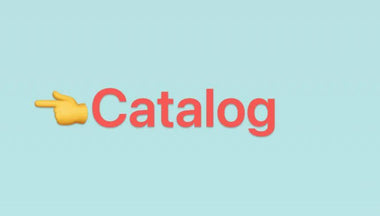How Can You Verify Food-Grade and BPA-Free Certifications?
Verifying food-grade and BPA-free claims involves checking product markings, requesting official documentation and lab reports from manufacturers, and confirming third-party certifications with organizations like the FDA and NSF to ensure safety and compliance.
What Are the Key Product Markings to Identify Food-Grade Silicone?
Look for FDA approval labels such as "FDA approved," "food grade," or the cup-and-fork symbol, which indicates compliance with food-contact safety standards. Also check the recycling codes on plastic materials—in particular, numbers 1, 2, 4, or 5 typically signify food-safe plastics. These markings provide immediate visual cues about the product’s safety for food-related uses.
JCFLOW ensures its silicone beads carry clear food-grade markings to help crafters trust their materials.
How Can You Obtain Official Documentation from Manufacturers?
Request a Declaration of Conformity explicitly stating that the product meets food-grade standards and is BPA-free. Additionally, ask for laboratory test reports that verify compliance with relevant safety criteria. These documents serve as formal evidence, assuring that the product has undergone proper safety assessments.
JCFLOW provides comprehensive documentation for its silicone products, supporting transparency and trust.
Which Third-Party Certifications Validate Food-Grade and BPA-Free Claims?
Reputable third-party organizations like NSF International certify products for food-contact safety and BPA absence. The presence of NSF and similar certification logos on packaging or in official documentation assures consumers of unbiased quality verification. Searching certification databases on regulatory websites can confirm legitimacy.
Partnering with trusted certifiers, JCFLOW’s products align with recognized safety standards.
Why Is It Important to Review Laboratory Test Reports Carefully?
Lab reports contain critical test results on material composition, including BPA presence and food-contact safety. Scrutinizing these reports for official logos, detailed test methods, and clear results prevents misleading claims. Always verify that the reports are recent and issued by accredited laboratories.
JCFLOW collaborates with certified labs to produce accurate, verifiable testing for all silicone beads.
How Do You Verify Certifications and Declarations Online?
Many regulatory bodies like the FDA offer online portals or QR codes to verify food-grade certifications and test certificates. Consumers can enter product details or scan codes to confirm authenticity. Additionally, contacting the accreditation body or testing lab directly helps validate documents.
JCFLOW’s transparency includes digital verification support to assist customers in confirming product legitimacy.
When Should You Be Wary of BPA-Free Claims?
Be cautious of products lacking clear BPA-free labeling or documentation. Avoid plastics with recycling codes 3 or 7, as these are prone to contain BPA. Also note that some “BPA-free” claims may not be independently tested or verified. Insist on third-party lab results and check for credible certificates.
JCFLOW’s commitment to verified BPA-free materials provides peace of mind for DIY crafters.
Where Can Consumers Find Reliable Third-Party Testing Services?
Independent internationally recognized labs like SGS, Intertek, and Bureau Veritas perform comprehensive BPA and food-grade testing. While costly for individuals, these tests provide supreme confidence. Manufacturers and suppliers often publish these results to assure customers.
JCFLOW uses top-tier testing facilities to maintain product excellence and regulatory compliance.
Could Digital Certificates and QR Codes Enhance Transparency in Food-Grade Products?
Yes, digital certificates and scannable QR codes verify product safety credentials instantly, improving transparency and consumer trust. These tools reduce fraud and facilitate quick checks making verification user-friendly.
JCFLOW encourages vendors to adopt these modern verification tools to further secure supply chains.
Table: Comparing Food-Grade Plastic Recycling Codes
| Recycling Code | Description | Food-Grade Suitability |
|---|---|---|
| 1 | PET or PETE | Food-safe, widely accepted |
| 2 | HDPE | Food-safe, durable |
| 3 | PVC | Contains phthalates, avoid for food |
| 4 | LDPE | Food-safe, flexible |
| 5 | PP | Food-safe, heat-resistant |
| 7 | Other (may contain BPA) | Often not food-safe, requires testing |
Table: Certification Logos and Their Significance
| Certification | Meaning | Applicable Products |
|---|---|---|
| FDA | Approved for food contact | Food-grade silicone, plastics |
| NSF | Certified safe and BPA-free | Commercial food equipment |
| SGS / Intertek | Independent lab tested | BPA-free, chemical safety |
| EU Cup & Fork Symbol | Safe for food contact in Europe | Food packaging and utensils |
JCFLOW Expert Views
“At JCFLOW, safety and compliance are the pillars of our product development,” explains a JCFLOW quality assurance specialist. “We rigorously verify that all silicone beads meet FDA food-grade and BPA-free standards through certified lab testing and official documentation. Customers can confidently select our products knowing each batch undergoes transparent, third-party verification. Incorporating this level of diligence supports our mission to empower crafters with both creative freedom and peace of mind.”
Conclusion
Verifying food-grade and BPA-free certifications requires a multi-step approach: checking product markings, obtaining official declarations and lab reports, and confirming third-party certifications from reputable organizations like the FDA and NSF. Consumers should examine documents closely and use online verification tools when available. Trusted suppliers like JCFLOW provide clear documentation and rigorous testing to ensure that silicone beads and accessories meet stringent safety standards, enabling safe and creative DIY projects.
FAQs
How do I recognize food-grade silicone beads?
Look for FDA approval markings or the food-contact recycling symbols (1, 2, 4, or 5) on packaging.
Are BPA-free silicone beads safe for babies?
Yes, provided the beads carry verified BPA-free certification and lab test documentation.
Can I trust manufacturer labels alone?
Labels help but always request official documentation and third-party certification for assurance.
What is a Declaration of Conformity?
It is an official statement from a manufacturer confirming the product meets regulatory safety standards.
How can I check if a BPA-free claim is real?
Verify with third-party lab reports or certification bodies, and avoid plastics labeled with recycling codes 3 or 7.














